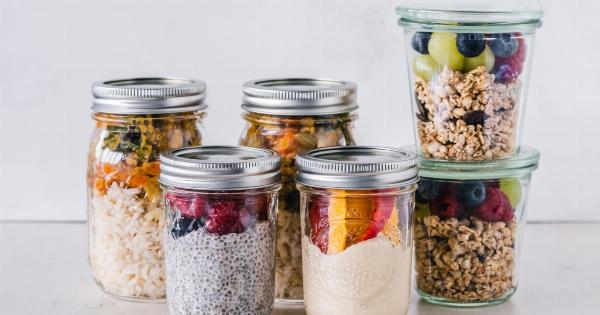Preserving food has been an essential aspect of human civilization since the beginning of time. From salting meat to drying fruit, preserving food has allowed us to store and consume food for extended periods.
Two universally consumed foods, bread, and spaghetti, have various methods of preservation. In this article, we’ll delve into the science behind the preservation of bread and spaghetti.
Preserving Bread
Bread is an essential food item in many cultures worldwide. It’s a staple food that has been consumed for thousands of years. Bread is made using flour, water, and yeast.
While bread is delicious and nutritious, it tends to become moldy and stale relatively quickly, depending on the storage conditions. There are various methods of preserving bread that have been used over the years; some of these methods include:.
Freezing Bread
Freezing bread is a simple and effective way to preserve it for long periods. When bread is frozen, the yeast and other microorganisms that cause bread to spoil become inactive.
Freezing bread slows down the staling process, which prolongs the shelf life of bread. To freeze bread, all you need to do is wrap the bread in plastic wrap or foil and place it in the freezer. Frozen bread can last up to six months.
Vacuum Packaging Bread
Vacuum packaging is a method of preserving bread that involves removing all the air from the packaging.
This method is effective because it creates an anaerobic environment that prevents the growth of mold and other microorganisms that cause bread to spoil. To vacuum pack bread, you need a vacuum sealer. Simply place the bread in the bag, remove the air, and seal the bag. Vacuum-packed bread can last up to three weeks.
Putting Bread in a Breadbox
A breadbox is a container designed to hold bread. Breadboxes were invented in the 1920s, and they remain popular to this day. Breadboxes work by creating a controlled environment that allows bread to stay fresh for longer.
Breadboxes are usually made of wood and have a lid that fits snugly on top. The lid of the breadbox creates a slight moisture barrier that prevents the bread from drying out.
Preserving Spaghetti
Spaghetti is a type of pasta that’s made from durum wheat. It’s a popular food item that’s consumed all over the world. Spaghetti is high in carbohydrates and is an excellent source of energy.
Spaghetti is relatively easy to cook, but it’s essential to store it correctly to prolong its shelf life. Here are some methods of preserving spaghetti:.
Freezing Spaghetti
Freezing is one of the best methods of preserving spaghetti. Freezing spaghetti involves boiling it for a few minutes, then rinsing it in cold water to stop the cooking process. Once the spaghetti is cooled, it’s placed in a freezer bag and frozen.
Frozen spaghetti can last up to eight months. To reheat frozen spaghetti, simply boil it for a few minutes to thaw it.
Drying Spaghetti
Drying spaghetti is a traditional method of preserving pasta. To dry spaghetti, you need to hang it in a warm and dry place until it’s completely dry. Dried spaghetti can be stored for up to a year.
To cook dried spaghetti, simply boil it for a few minutes until it’s soft.
Canning Spaghetti
Canning is a method of preserving spaghetti that involves storing it in a sealed container. To can spaghetti, you need a pressure canner and canning jars. After cooking the spaghetti, place it in the jars and add sauce.
The jars are then sterilized in a pressure canner. Canned spaghetti can last up to a year. To eat canned spaghetti, simply heat it up in a saucepan or microwave.
Conclusion
In conclusion, preserving bread and spaghetti is possible using different methods. The methods listed above remain some of the most effective ways of storing bread and spaghetti to preserve their flavor and texture.
Preserving your food items properly is essential to minimize food waste and to save money. Try out some of these preservation methods today, and enjoy your bread and spaghetti for longer periods.































